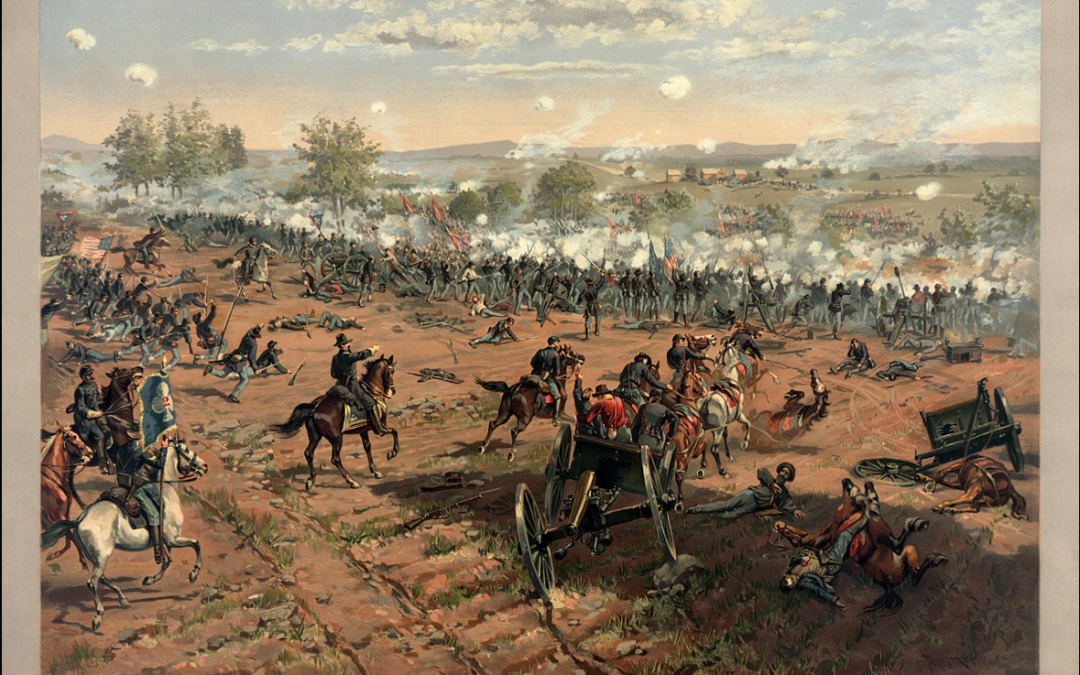What if the Union Army had machine guns at the Battle of Gettysburg? What if Robert E. Lee had observation balloons to spy on his opponents? These are the sorts of questions that tempt alternative history buffs. The popularity of speculative novels and movies demonstrates that humans can’t resist the chance to explore what might have been.
But some are putting alt history to a more practical purpose: teaching U.S. military officers to deal with the impact of new technologies. New weapons, such as drones and hypersonic missiles, have revolutionized war and sent armies scrambling to devise new tactics.
So why not use the past to spur thinking about the future? That’s why the RAND Corporation think tank devised a Gettysburg wargame futures program for the U.S. Army, which deals with questions such as what equipment and doctrine the Army will need in coming years.
“The whole idea is to create an historical laboratory,” Gian Gentile, a retired Army colonel and historian who is now deputy director of RAND’s Arroyo Center, told Popular Mechanics. “Using counterfactuals that will allow the players to learn from them, and apply them to their present and future thinking.”
The RAND game took an historical event, but made a few counterfactual changes. This Battle of Gettysburg would feature the historical armies, but they would be armed with advanced equipment—not with lasers or guided missiles, but technology that was actually available in 1863, yet which the Union and Confederacy failed to take advantage of.
The Real Gettysburg
Gettysburg is one of the most closely studied battles in history. Broadly speaking, it was a sort of accidental battle. Robert E. Lee led his Army of Northern Virginia on an invasion of the North, whose success might induce the Union to agree to peace. Advancing into Pennsylvania, Lee’s troops stumbled into George Meade’s Army of the Potomac at the town of Gettysburg. What began as a surprise encounter between Union cavalry, and hungry Confederate infantry in search of supplies, became a massive three-day battle as the South sought to dislodge Union forces from positions such as Cemetery Ridge and Little Round Top. The battle ultimately cost 50,000 casualties—and marked the beginning of the end for the Confederacy.
Both armies suffered from 19th century problems: ponderous command and control conducted through couriers who had to physically deliver messages to commanders on the battlefield (telegraphs existed but were limited to fixed sites), and troops burdened with cumbersome muzzle-loaded rifles and cannon with a slow rate of fire.
However, better technologies did exist: Gatling guns (an early machine gun), observation balloons, rapid-fire breech-loading rifles, and field telegraphs portable enough to accompany combat units.
For various reasons, the North and South failed to exploit these technologies. For example, breech-loading Sharps repeating rifles could fire 10 rounds per minute, or more than double the rate of a muzzle-loading rifle. Yet while some Union cavalry used repeating rifles with devastating effect at Gettysburg, most troops stuck with the muzzle-loaders. “Federal supply and ordnance officers resisted buying the Sharps in large numbers, judging that the rifle’s high rate of fire would potentially lead soldiers to waste ammunition, thereby stressing a supply system that already struggled to keep up with demand,” noted the RAND report.
Techno-Gettysburg
RAND actually conducted two sets of games. The first was played in 2018, and began with the battle in progress on Day 2 of the struggle. The 2021 sessions began on Day 1 as the armies advanced to contact, and thus allowed the players to employ different maneuvers than Lee and Meade did. It was also a “double-blind” game controlled by umpires, where the opposing teams didn’t see each other’s forces on the map unless the referees decided they had been spotted by reconnaissance.
Though the simulation featured technology that was the ancestor of modern equipment, RAND avoided the temptation to turn Gettysburg into the Battle of the Bulge or Desert Storm. For example, there was just one field telegraph system at each of the opposing army headquarters, with wires that extended eight miles to each corps’ headquarters. There were also a few telegraph-equipped observation balloons that could watch enemy movements up to 10 miles away.
Reflecting pre-radio command structures, the army commanders (the players representing Lee and Meade) issued orders to their subordinates each turn. But several game turns might elapse before the recipient was considered to have received the message by courier. However, telegraphed orders were deemed to have been received immediately.






